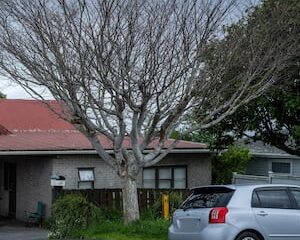Business
Farmers’ Improved Conditions Boost Regional Property Markets

Stronger conditions for farmers are positively influencing regional property markets across New Zealand, as reported by Cotality, previously known as Corelogic. Their latest data reveals a nationwide decline in property values, with a drop of 0.2 percent in July, 0.6 percent in the quarter, and 0.2 percent year-on-year. Notably, major cities like Auckland and Wellington have seen significant decreases, remaining 21.7 percent and 24.7 percent below their peak values, respectively.
The resilience observed in provincial areas indicates a divergence within the New Zealand economy. Chief economist Kelvin Davidson notes that primary industries are currently faring better than other sectors. While Gisborne experienced a price decline in July, regions like Hastings, Whangarei, and New Plymouth reported increases of at least 0.5 percent.
Davidson cautioned against overstating the rural-urban divide in property values. He stated, “It’s early days, and any perceived rural-urban divide in the property market at present should not be overplayed. After all, housing conditions are still fairly subdued almost everywhere.” He suggested that a potential export-led recovery in the next year or two could significantly affect regional house prices compared to urban areas.
The data shows that a higher proportion of regional markets have experienced value growth compared to larger urban centres. Davidson highlighted that while no market is currently booming, regional centres are showing signs of growth. The anticipated export-led recovery might lead to increased capital flowing into service towns and cities from agricultural earnings. As Davidson put it, “The longer the export-led recovery continues, the greater the chance you see outperformance in the regional markets.”
Investment trends might soon shift as property investors take notice of these developments. Davidson remarked that areas like Invercargill and New Plymouth could become attractive options for potential investors. “If there’s a bit more capital growth, it might be a place to think about investing,” he noted, while also emphasizing the risks associated with such decisions.
According to Gareth Kiernan, chief forecaster at Infometrics, the South Island’s property market generally demonstrates stronger performance than that of the North Island. He pointed out that certain regions in the South Island are experiencing better sales levels and stock numbers, with less oversupply. Meanwhile, Auckland and Wellington are grappling with market challenges.
Kiernan characterized the current economic recovery as “old-fashioned,” relying more on the export sector than on migration and housing expansion from Auckland. He expressed uncertainty about how regional housing markets will respond to the agricultural upturn, noting that some areas may not have sufficient population growth to justify the number of homes built during the peak of the construction boom.
Despite these challenges, Kiernan remains optimistic about areas like Christchurch and Queenstown, which are connected to the dairy sector and might offer better rental yields compared to Auckland. However, he added that potential investors must consider prevailing uncertainties in the market, particularly regarding population growth and property supply.
As the market continues to evolve, Davidson pointed out that the second half of August typically sees an increase in property listings. While sales volumes have been gradually improving, the overall market remains cautious. “This is a market that’s going sideways,” he explained. “Sales are rising, but it’s not flowing through to prices.”
Both buyers and sellers are adopting a measured approach as they navigate the current landscape. First-time buyers and small investors are actively participating, but many sellers are not in a hurry, with those confident in their job security willing to wait for their desired price.
Previously, analysts had predicted a 5 percent rise in house prices for this year, but current trends suggest a more modest increase of only 1 to 2 percent in 2025. As the situation develops, all eyes will be on how regional markets adapt and respond to these shifting conditions.
-

 Sports1 month ago
Sports1 month agoNetball New Zealand Stands Down Dame Noeline Taurua for Series
-

 Entertainment1 month ago
Entertainment1 month agoTributes Pour In for Lachlan Rofe, Reality Star, Dead at 47
-

 Sports1 month ago
Sports1 month agoSilver Ferns Legend Laura Langman Criticizes Team’s Attitude
-

 Entertainment1 week ago
Entertainment1 week agoNew ‘Maverick’ Chaser Joins Beat the Chasers Season Finale
-

 Entertainment2 months ago
Entertainment2 months agoKhloe Kardashian Embraces Innovative Stem Cell Therapy in Mexico
-

 Sports2 months ago
Sports2 months agoGaël Monfils Set to Defend ASB Classic Title in January 2026
-

 World3 months ago
World3 months agoPolice Arrest Multiple Individuals During Funeral for Zain Taikato-Fox
-

 Politics2 weeks ago
Politics2 weeks agoNetball NZ Calls for Respect Amid Dame Taurua’s Standoff
-

 Entertainment3 weeks ago
Entertainment3 weeks agoTyson Fury’s Daughter Venezuela Gets Engaged at Birthday Bash
-

 Sports3 weeks ago
Sports3 weeks agoHeather McMahan Steps Down as Ryder Cup Host After Controversy
-

 Entertainment3 weeks ago
Entertainment3 weeks agoTyson Fury’s Daughter Venezuela Gets Engaged at Birthday Bash
-

 World2 weeks ago
World2 weeks agoNew Zealand Firefighters Plan Strike on October 17 Over Pay Disputes



















